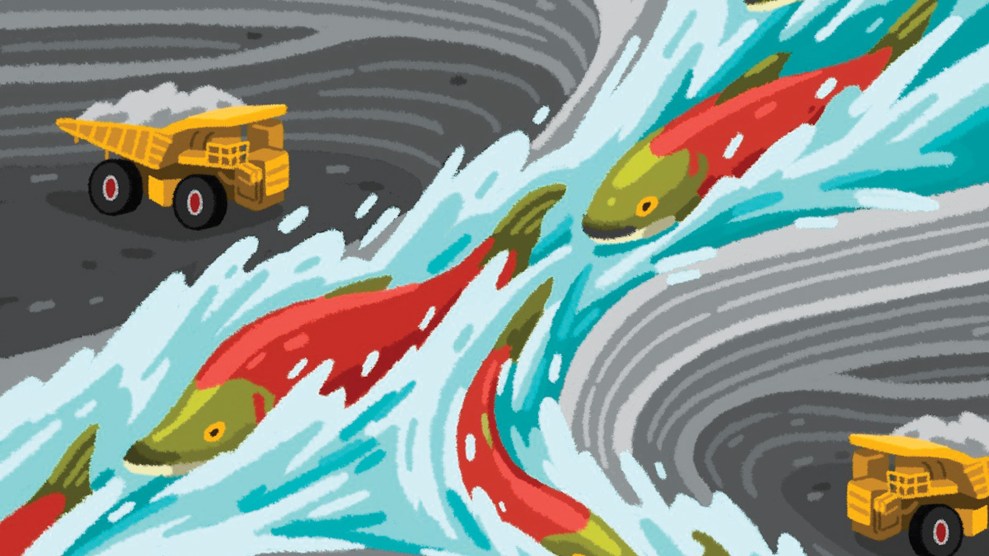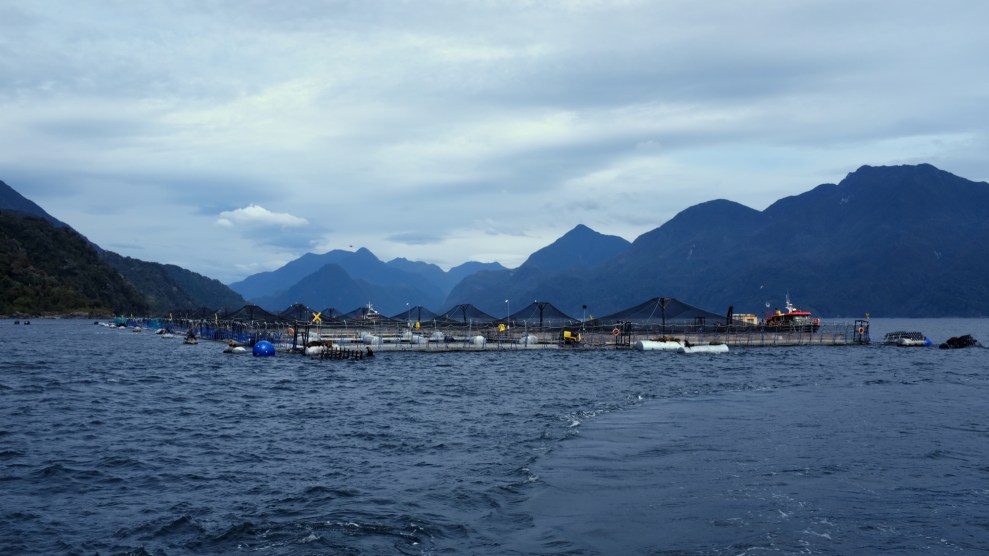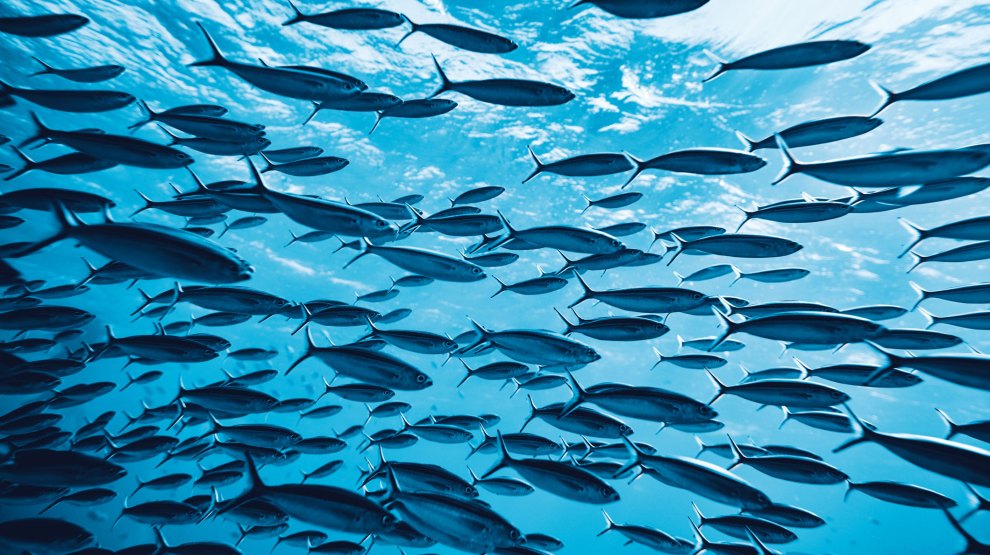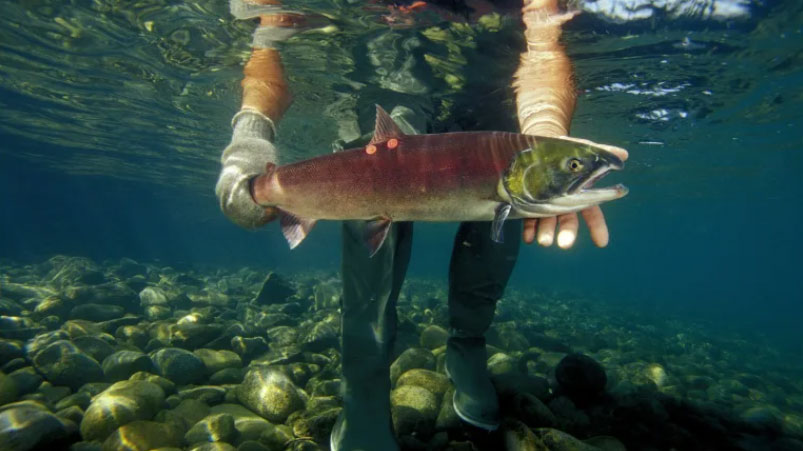
Xulin/High Country News
This story was originally published by High Country News and is reproduced here as part of the Climate Desk collaboration.
As human-caused climate change points a giant hair dryer at Western North America’s glaciers, melting them ever more rapidly, potential Pacific salmon habitat is opening up. New river systems are starting to flow, and rain and snowmelt will keep many running even after the ice disappears. In some, salmon are appearing for the first time.
But mining companies are homing in, too. According to peer-reviewed research published in Science last November, there’s substantial overlap between potential future salmon habitat and new mining claims in Southeast Alaska and in western British Columbia, where many Pacific salmon spawn. But there is hope: The establishment of Indigenous protected areas in British Columbia could protect at least some of these new waterways, and their fish, for future generations.
“The science is very clear,” said Naxginkw Tara Marsden (Gitanyow Huwilp), who co-authored the study. Marsden is the Wilp Sustainability director for the Gitanyow Hereditary Chiefs, whose unceded traditional territory lies in what today is British Columbia. “There are both risks and potential short-term benefits with salmon finding new habitats and adapting, and we need to do what we can to ensure that those areas are protected.”
In North America, Pacific salmon include five species that migrate to the ocean, then return to their natal rivers to spawn. But a small percentage of “stray” salmon visit different rivers. Because Pacific salmon have evolved in incredibly dynamic river systems, straying may be an adaptation that keeps populations resilient, explained Jonathan Moore, the article’s lead author and head of the Salmon Watersheds Lab at Simon Fraser University.
Without human-caused climate change, the region’s glaciers would still be shrinking. They have been since the last ice age, but now they’re melting much more quickly because of human activity. By the end of the century, 80 percent of the region’s glaciers may be gone. And mining laws in Alaska and British Columbia do not adequately protect future habitats.
“As these newborn ecosystems are encountering the Earth, society is faced with this decision,” Moore said. “Are we going to protect them for salmon? Or are we going to dig them up for gold?”
Gold companies in particular are staking claims in a gold rush. It’s relatively easy and inexpensive to stake claims, even underneath glaciers that haven’t melted yet. Mine tailings could pollute potential salmon habitat hundreds of miles downstream, possibly for thousands of years.
Researchers don’t know how quickly new salmon habitat will emerge on landscapes exposed by thawing, and mining may not immediately threaten salmon in some locations, cautioned Daniel Schindler, a watershed ecologist at the University of Washington who researches salmon ecosystems in western Alaska. Schindler, who was Moore’s doctoral research advisor, said that salmon have appeared already in emerging rivers close to the coast, where riverbeds are less steep and more stable. But farther inland, steeper, more turbulent rivers with tumbling gravel beds may not develop into suitable spawning habitat for thousands of years.
Still, the overarching idea that conservation and management strategies need to keep up with climate change and protect future Pacific salmon habitat is “bang on,” Schindler said. “Conservation tends to grasp desperately at what we have now. And that may be a losing cause.”
For now, a ray of hope may be Indigenous protected areas. The Gitanyow Hereditary Chiefs established the Wilp Wii Litsxw Meziadin Indigenous Protected Area in 2021, just a short drive from the Alaska border, after noticing more salmon in the area associated with glacial retreat. Meziadin will protect emerging salmon habitat from mining, while allowing other uses. The British Columbia government has not yet recognized the protected area, however, and is still selling mineral tenures in the watershed.
“Where colonial governments are failing, and where they are not acting quickly to ensure that those areas are protected in the face of mining, Indigenous people (in British Columbia) are picking up the slack and trying to use their own laws to protect those important areas,” Marsden said.
A broader solution could emerge: A court ruled last September that British Columbia must reform its Mineral Tenure Act to include First Nations consultations, which could help protect future salmon habitat. As of publication, the province has yet to act.
“If we allow nature to take its course, the salmon will continue to thrive,” Marsden said.















